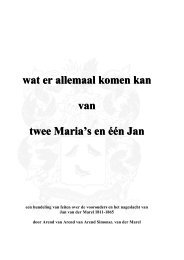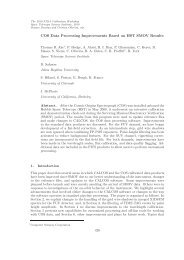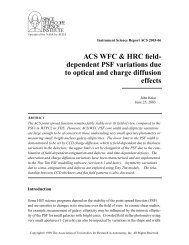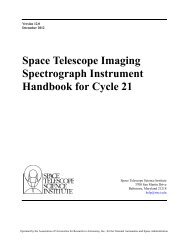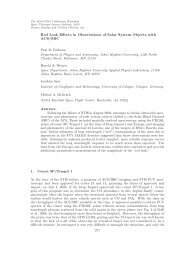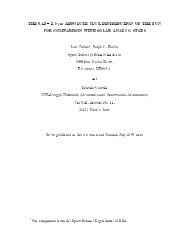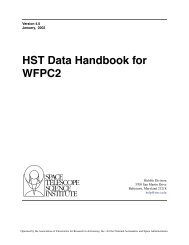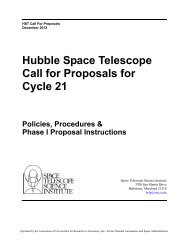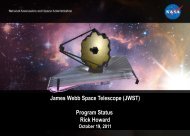STScI Annual Report 2002: A Living Mission
STScI Annual Report 2002: A Living Mission
STScI Annual Report 2002: A Living Mission
You also want an ePaper? Increase the reach of your titles
YUMPU automatically turns print PDFs into web optimized ePapers that Google loves.
36 improvements<br />
Better Management of Anomaly <strong>Report</strong>ing<br />
Anomalies sometimes affect the quality of science data from Hubble. When this<br />
occurs, the responsible Institute staff members and astronomers using the<br />
data must be informed. In the past, anomaly reporting involved unrelated tools,<br />
manual effort, and various locations for storing information, which, for example,<br />
made data collection for trending evaluations difficult to accomplish. An Institute<br />
initiative called PROMPT— PRoblem Observation Management ProjecT—has<br />
improved anomaly reporting by automating processes to ensure completeness<br />
and consistency and consolidating information in one database. PROMPT has<br />
three components: AlertObs collects anomoly information through a graphical<br />
user interface, places it in a database, and distributes an alert message to<br />
Institute staff; AlertPI generates the Observation Exception <strong>Report</strong>, which is sent<br />
to the proposal contact and placed in a database; and AlertAQ processes new or<br />
updated AlertObs anomaly entries and documents them in the archive catalogue.<br />
PHASTGMS Improves Hubble Proposing<br />
The Institute organized the PHASTGMS (PHASe I to Grants Management System)<br />
project to resolve problems encountered in Cycle 10 when the Phase I proposals<br />
were processed. Four groups joined in this effort— the Science Policies Division,<br />
the Grants Administration Branch, the Engineering and Software Services<br />
Division, and the Program Coordinators. The PHASTGMS project established new<br />
procedures for proposal processing, set requirements for tools to maintain the<br />
Principal Investigator and Co-Investigator addresses, created an interface control<br />
document to rationalize transitions between systems and responsible groups,<br />
and supported the use of the Astronomers Proposal Tool (APT) for Phase I<br />
submission, which was in place for Cycle 12. The PHASTGMS improvements will<br />
ensure rapid and efficient processing of proposals as well as the creation of<br />
an accurate database for proposal management and tracking.<br />
Improvements in the Hubble Program Selection Process<br />
The Institute began the Hubble Treasury Program, which the HST Second Decade<br />
committee recommended, to increase the number of large programs and to<br />
pursue strategic science objectives, such as synergism with other missions and<br />
acquiring important data sets that otherwise would not be available for many<br />
years after the end of the Hubble mission. The Director appointed the Hubble<br />
Treasury Program Advisory Committee to provide advice on ways and means,<br />
strategic directions, and opportunities to promote community participation in<br />
the Hubble Treasury Program. After considering the various ways to facilitate<br />
large collaborations, we conducted a well-attended Hubble Treasury workshop in<br />
fall <strong>2002</strong>, in which numerous possible Treasury projects were enunciated. We<br />
then formed interest groups, which began the work of formulating proposals for<br />
large observing programs based on these ideas. We plan to repeat this activity<br />
every year in connection with the summer meeting of the American Astronomical<br />
Society. Data sets from Hubble Treasury programs are non-proprietary and<br />
immediately available to the community. After processing, observing teams will<br />
provide 'science-ready' data sets to the archive plus ancillary data products,<br />
such as catalogues. Because supporting observations at other wavelengths add<br />
value to these programs, we will continue to work with other important national<br />
facilities—such as Chandra, SIRTF, NOAO, and Gemini—to coordinate observing<br />
projects on multiple telescopes.



